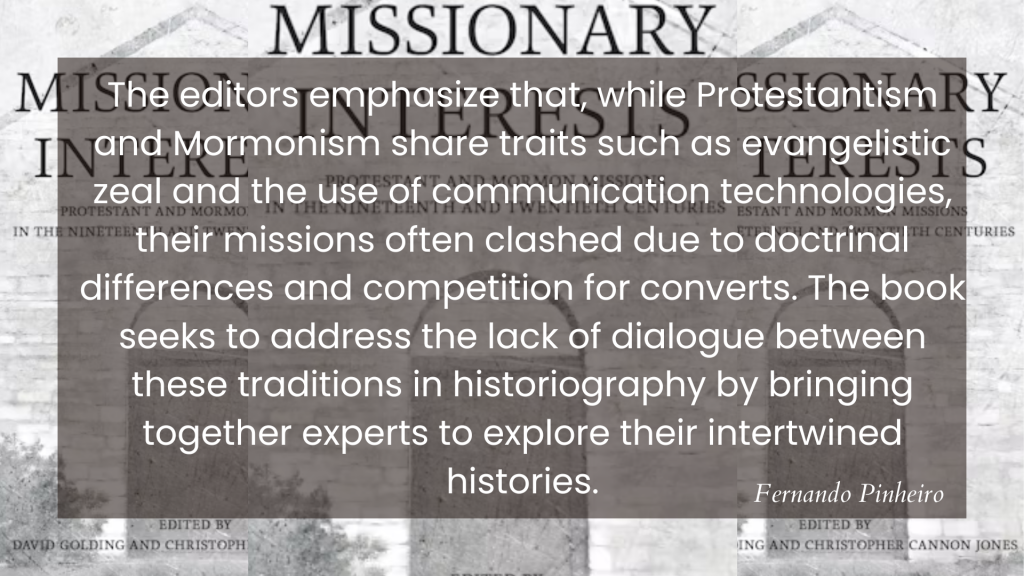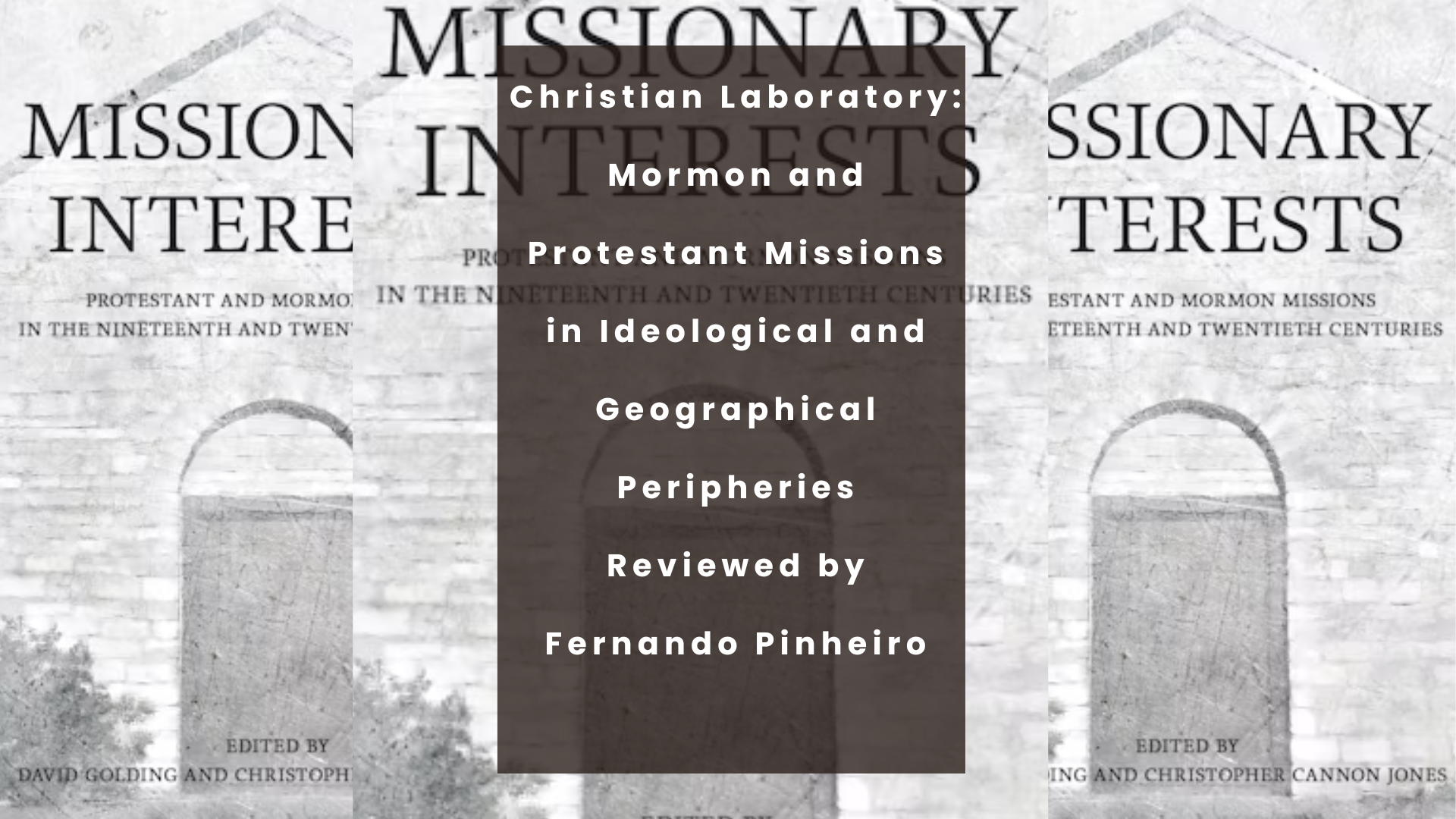Articles/Essays – Volume 58, No. 3
Christian Laboratory: Mormon and Protestant Missions in Ideological and Geographical Peripheries | David Golding and Christopher Cannon Jones, eds., Missionary Interests: Protestant and Mormon Missions in the Nineteenth and Twentieth Centuries
The book Missionary Interests: Protestant and Mormon Missions in the Nineteenth and Twentieth Centuries, edited by David Golding and Christopher Cannon Jones, provides a significant contribution to the historiography of Christian missions by comparatively examining Protestant and Mormon missionary efforts in the nineteenth and twentieth centuries. The work stands out for exploring connections, tensions, and parallels between these religious traditions, bringing together research presented at a symposium held in 2019 in Salt Lake City.
Laurie F. Maffly-Kipp’s preface sets the tone for the collection, describing Christian missions as a kind of experimental laboratory that reveals the complexities of missionary work and the dynamics of power and culture involved (vii–viii). Maffly-Kipp argues that Christian missions, in all their variants, are historical and social experiments that reconfigure values, identities, and cosmologies. She writes that comparing Protestants and Mormons reveals fundamental questions about religious authority, conversion strategies, and what constitutes missionary success (viii–ix). The book’s goal, as outlined in the editors’ introduction, is to expand the understanding of Christian missions by examining the parallels and interactions between Protestants and Mormons in global contexts. This comparative approach is innovative, given that these two traditions have often been treated separately in previous studies.
The editors emphasize that, while Protestantism and Mormonism share traits such as evangelistic zeal and the use of communication technologies, their missions often clashed due to doctrinal differences and competition for converts. The book seeks to address the lack of dialogue between these traditions in historiography by bringing together experts to explore their intertwined histories.
The collection is organized into eleven chapters, structured chronologically, spanning the early nineteenth century to the late twentieth century. Each chapter tackles a specific issue, often linking missionary efforts to broader historical and cultural contexts. For example, the chapters explore topics such as the impact of missions on Indigenous communities, the role of technology and photography in missionary work, and the relationship between missions and colonial projects.

One of the book’s most notable contributions is its interdisciplinary and comparative approach. The chapters use diverse historical sources, from missionary diaries to photographs and institutional reports, to offer a broad and detailed view of missionary praxis. By adopting a comparative perspective, the book transcends the limitations of previous studies that often focused on just one tradition.
This approach elucidates common and divergent themes, such as the authority to preach and the participation of women in missionary work. The work also examines how missions influenced and were influenced by political and social contexts, such as colonialism and shifts in global power dynamics. Challenges faced by missions are discussed as well, including natural disasters, cultural resistance, and issues of race and gender.
Particularly intriguing are the chapters that explore how missions often perpetuated ideas of cultural and racial superiority, even as they sought to convert and “civilize” others. This tension is particularly evident in interactions between missionaries and Indigenous or non-Christian communities, wherein concepts of “progress” and “modernity” shaped conversion strategies.
Another highlight of the book is its analysis of the theological and cultural issues that shaped Protestant and Mormon missions. The introduction notes the lack of missiology among Mormons compared to Protestants, who developed a rich tradition of missionary theory (6). This difference reflects distinct approaches to missionary practice and theology but also reveals how both traditions faced similar challenges when engaging with non-Western cultures.
The work holds great relevance for scholars of religious history, cultural studies, and missiology. By highlighting the interconnections between Protestant and Mormon missions, the book challenges traditional narratives and offers new perspectives on the impact of missions on the formation of national, racial, and religious identities. The comparative analysis also encourages a reevaluation of how missions shaped global Christianity and the dynamics between religion and power.
Missionary Interests is an essential contribution to understanding Christian missions in the nineteenth and twentieth centuries. By bringing together innovative and comparative perspectives, the work illuminates the complexities of Protestant and Mormon missions, challenging assumptions and opening new avenues for research. With its focus on global connections and local issues, the book offers a vital starting point for future studies on the impact of Christian missions in global history.
David Golding and Christopher Cannon Jones, eds. Missionary Interests: Protestant and Mormon Missions in the Nineteenth and Twentieth Centuries. Ithaca: Cornell University Press, 2024. 230 pp. Paperback: $26.30. ISBN: 978-1501774430.


 Back to full Issue
Back to full Issue

